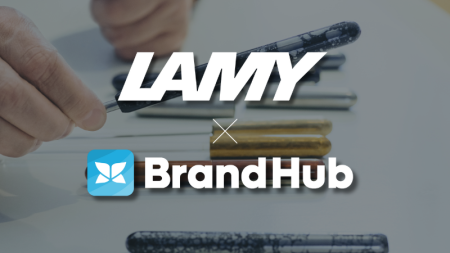What does Digital Rights Management mean?
In a world increasingly dominated by digital content, Digital Rights Management (DRM) plays a crucial role. DRM refers to technologies and also strategies developed to control, protect and restrict access to digital content. Basically, DRM refers to all content and file formats from music and videos to e-books, software or games. DRM serves to protect the rights of creators, publishers and distributors by controlling how that content can be used. In the case of sharing assets from a DAM, this article is primarily about photos.
How does DRM protect your digital assets?
Whether you are a manufacturer or a retailer, you have images, documents, and sometimes movies on your website. If you do not claim the rights to these assets, anyone can use the material. In most cases this is not desirable. Therefore, you should claim the copyright to your assets. This is the first important step.
You probably know this: movies on platforms like Netflix, Disney+ or Amazon Prime you can play without violating rights only in the designated applications. This is how the rights of the movies are protected in a technical way. It is DRM on a technical basis. Of course, such a method does not work for images that you want to share. There are other ways to protect your material efficiently. Because let's face it: in most cases you will be happy about the use of your images. This is another reason why DRM should not be an obstacle to including images in websites, if that is what you want. Basically, the procedure is quite simple. Those who wish to use your assets must sign an image rights usage agreement. If necessary, mark your images with an invisible tag. This way it is identifiable who has shared your images. So it's more of a contractual thing.
By the way, it is the same if you are on the other side and use other people's assets - for example stock images. You buy them for a certain period of time and for defined purposes. A DAM tool can help you to observe the general conditions of the purchased licenses.
Relevance of Digital Rights Management
The following section outlines the relevance of DRM.
Copyright protection
DRM offers creators and content creators the ability to protect their works from unauthorized use, copying, and distribution. This involves two things. Primarily, you're probably thinking of creators - photographers, video producers, game programmers, etc. - who want to secure their rights so they can be properly compensated for their work. However, asset protection for companies is also important. This is about distributors' access to assets and the prevention of piracy. For both groups, claiming copyright is important first - in other words, a legal process. Then there are technical ways to protect copyright. For e-commerce retailers and users of DAM systems, image rights usage contracts with business customers are especially important here. Slightly more modernly, this type of contract should perhaps be called an asset rights usage contract, since it can also be about copyright protection of graphics (2D & 3D), films, documents, software, etc., in addition to images.
Fight against piracy
E-commerce is mainly about using assets - images, graphics, documents, etc. - as a sales tool. Example: Only retailers who meet certain standards in their stores get high-quality images made available in an easy way. DRM technologies and contracts make it more difficult to illegally copy and distribute digital content or to trace the source of the data. This can reduce financial damage and increase motivation to create high-quality content. Basically, you want images to be distributed for your business. Sometimes you have customers who use images without agreements. DAM systems provide you with tools that allow you to identify the source of the imagery. Restricting access to assets through DAM software also allows you to keep design drawings, imagery, and the like secret for as long as possible to delay pirates copying your products for as long as possible.
Flexibility for licensing
DRM allows digital content owners to implement different licensing models. For example, with a DAM system you can specify which customer gets assets and at what quality, or you can integrate digital watermarks into the material. For sales purposes, this option should not be underestimated. So think about what makes strategic sense for you and your company.
Revenue generation
By controlling access to digital content, content providers can implement various business models, such as pay-per-view, subscription services, or one-time purchases. This provides a sustainable revenue stream that can help fund future content.
Challenges of Digital Rights Management
What are the challenges of digital rights management (DRM)?
Sensicality of DRM
Producers want their products to gain visibility on the Internet. For this reason, the strategic benefits, as well as the potential losses in terms of visibility, should be carefully calculated. Example: If you want to place a logo in your assets, this can be done very easily and automatically with the TESSA DAM. However, if this results in visual disadvantages on the retailer's website because a disruptor is placed at the position of the logo, that's not good. You should not restrict the distribution of your assets by using DRM technologies. This applies to both the sale of assets and the distribution of assets as advertisements for your products. For example, if customers can't play a video they've purchased because of copy protection, that's not good for sales. Therefore, before you decide to act, be sure to check what the positive and negative consequences are.
Restriction of user rights
DRM can cause users to experience limitations on their rights. As in the example just given, customers may have difficulty playing purchased content on different devices or sharing it with others - compatibility issues. With CDs or DVDs, this has been the case time and again in the past. Since rights holders for music and videos play them in their own players and there are easy ways to purchase this content, the problem is less. But how does this work with images? - Restricting them to showing in their own players doesn't make sense if photos are to be visible on other websites - online marketplaces, for example. Restricting rights should therefore be more on a contractual basis. Blocking notes are also important. This way you ensure that your assets will only be shown after a certain point in time. Especially for successful campaigns, this is extremely important.
Hacking and circumvention
Despite all efforts, DRM can be hacked or circumvented. This can cause protected content to be distributed unlawfully nonetheless. Simplified: as soon as you give your image material to a website and they place the material on their website, this can be automatically collected by robotic software. You have no real chance to prevent this. That's why you should sign image rights usage agreements that also specify publication dates. In addition, you can add digital watermarks to the assets. Then, if images appear illegally, you can identify the source. By the way: There exists control software for such cases. However, in most cases, the costs and benefits are not in a reasonable relationship. In e-commerce, you will usually find out about relevant infringements in this way as well. However, if you distribute stock images, the situation is quite different. The market for stock images is confusing. Here you should check in any case whether the assets are used with the necessary license. Without a software solution this is not possible.
How does DRM work in the TESSA DAM?
Of course, we have integrated the relevant elements of DRM into TESSA DAM. This concerns both the possibilities to protect assets and the prevention of license violations on your part, for example with stock material.
Customized asset access
The first rule you should follow: don't just post your assets publicly on the web and give everyone who should get the assets an easy way to access them. In TESSA DAM we have implemented this in two parts. On the one hand it is about assets and on the other hand about users.
Assets, Categories & Channels
With assets there are usually two basic questions:
- What assets can a user get?
- In which quality can a user get assets?
In general, you could assign assets individually to user accounts. This also works with TESSA DAM. However, this is quite time-consuming if you have a lot of assets. Therefore, we usually divide assets into categories to make it easier. For example, it may look like this:
- Main Product Image
- Detail images
- Action images
- Data sheets
- 3D files (e.g. STEP files)
In TESSA DAM you can then define which customer group gets access to which asset category. For example, you can make 3D files available to customers who have reached a certain level of sales. Or you can work with channels. With channels you can manipulate assets. For example, you can adjust the resolution of assets, convert assets to the desired target format, or insert customer logos. What other possibilities you have with channels, we will explain in this blog post. So the task is to categorize assets and determine which channels are necessary.
Users or customers
For users, you define which groups there are and which categories of assets which group gets access to. Even if you could define this in TESSA DAM on the level of the individual user or customer, we recommend starting with a few groups - for example, classically with a division into A, B or C customers. In addition, you have the possibility in TESSA DAM to limit the duration of an account. So you don't forget to deactivate it when, for example, an image rights usage contract expires.
Tagging assets
With TESSA DAM it is possible to mark assets. In the past, logos were sometimes integrated into assets. This is still possible now but this method is not very accepted in e-commerce. Much more efficient is an invisible marking developed by us. So you can, for example, if images appear too early on the net, find out the source of the distribution and assert your rights.
Compliance with licenses
Limiting the sharing of assets isn't the only important thing. If you use license-restricted assets yourself, you must comply with those restrictions. This is possible in the TESSA DAM. In addition, license information can be stored in the TESSA DAM. This way you have it immediately at hand, should you have any questions about it. TESSA DAM is very flexible in this area. Normally, we store the source of supply (e.g. Shutterstock or Adobe Stock), the term, the type of use (e.g. some assets may not be printed depending on the contract), circulation information. If more specific information is needed for you, we can add custom fields.
The data is not only in the database. You will be able to automatically limit the duration of the assets in your environments. Of course you will also be informed about expiring licenses. So that images do not suddenly disappear from your website and you can extend or expand licenses if necessary.
Conclusion
Digital Rights Management is a two-edged technology that offers both benefits and challenges.
While it gives creators the ability to protect their works and earn reasonable revenues, users can face restrictions that limit their flexibility and control over purchased content. The complexity of DRM lies in the balance between property rights and user interests. In an increasingly digital world, the debate over the optimal implementation of DRM remains exciting and relevant. In the e-commerce environment, we recommend signing image rights usage agreements. If this is not sufficient for your case, digital watermarks should be integrated into your assets, making the sources of distribution identifiable.







